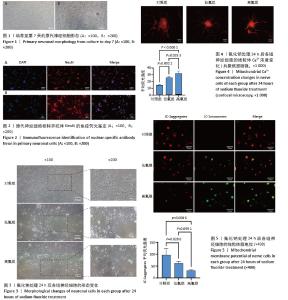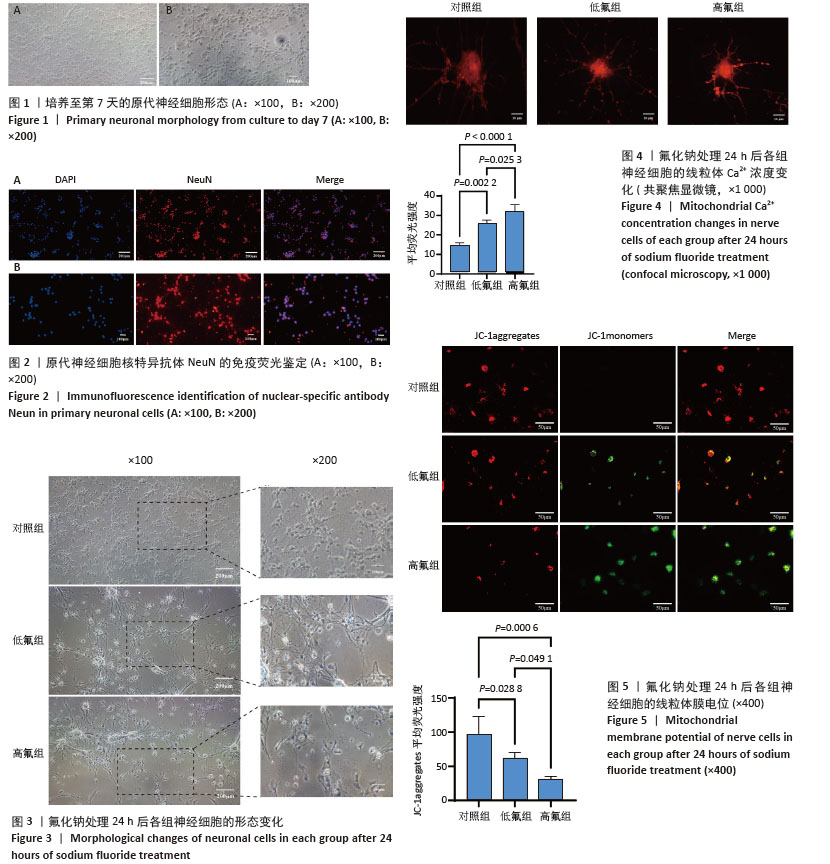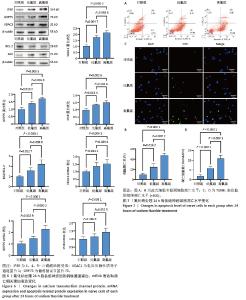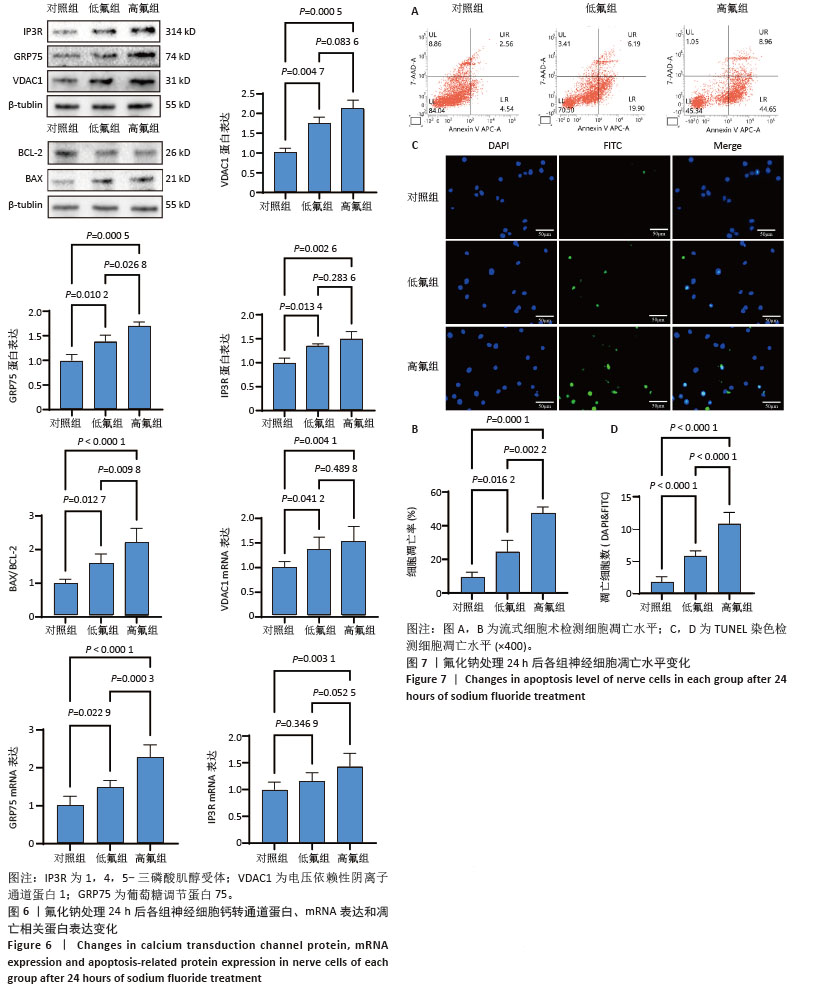[1] SOLANKI YS, AGARWAL M, GUPTA AB, et al. Fluoride occurrences, health problems, detection, and remediation methods for drinking water: A comprehensive review. Sci Total Environ. 2022;807(Pt 1): 150601.
[2] ZHANG J, SARDANA D, LI KY, et al. Topical Fluoride to Prevent Root Caries: Systematic Review with Network Meta-analysis. J Dent Res. 2020;99(5):506-513.
[3] HE X, LI P, JI Y, et al. Groundwater arsenic and fluoride and associated arsenicosis and fluorosis in China: occurrence, distribution and management. Expo Health. 2020;12:355-368.
[4] PODGORSKI J, BERG M. Global analysis and prediction of fluoride in groundwater. Nat Commun. 2022;13(1):4232.
[5] 唐余敬,蓝奉军,李光第,等.钙离子在慢性氟中毒发病机制中的作用[J].中国组织工程研究,2023,27(17):2745-2753.
[6] 赵保华,张东军,赵宗权.慢性氟中毒对神经系统的影响及诊治分析[J].中国地方病防治杂志,2018,33(3):327+329.
[7] CHEN L, JIA P, LIU Y, et al. Fluoride exposure disrupts the cytoskeletal arrangement and ATP synthesis of HT-22 cell by activating the RhoA/ROCK signaling pathway. Ecotoxicol Environ Saf. 2023;254:114718.
[8] 童爱群.Morris水迷宫训练对慢性氟中毒脑损害大鼠模型学习记忆能力及海马组织的影响分析[J].中国地方病防治,2022,37(4):
289-290.
[9] WEI N, DONG YT, DENG J, et al. Changed expressions of N-methyl-d-aspartate receptors in the brains of rats and primary neurons exposed to high level of fluoride. J Trace Elem Med Biol. 2018;45:31-40.
[10] 毕翻.慢性氟中毒对仔代大鼠海马NMDA受体表达的影响[D].贵阳:贵州医科大学,2020.
[11] 杨淳,温建霞,冯江龙,等.氟中毒大鼠脑组织中NMDA受体及内质网应激相关通路蛋白的表达[J].中国组织工程研究,2024,28(7): 1070-1075.
[12] 戴姗姗,李锦沂,杨克宇,等.氟化钠通过氧化应激和内质网应激途径诱导PC12细胞凋亡[J].山西医科大学学报,2023,54(8): 1107-1112.
[13] HU Y, CHEN H, ZHANG L, et al. The AMPK-MFN2 axis regulates MAM dynamics and autophagy induced by energy stresses. Autophagy. 2021;17(5):1142-1156.
[14] WANG N, WANG C, ZHAO H, et al. The MAMs Structure and Its Role in Cell Death. Cells. 2021;10(3):657.
[15] ZHANG N, YU H, LIU T, et al. Bmal1 downregulation leads to diabetic cardiomyopathy by promoting Bcl2/IP3R-mediated mitochondrial Ca2+ overload. Redox Biol. 2023;64:102788.
[16] GARBINCIUS JF, ELROD JW. Mitochondrial calcium exchange in physiology and disease. Physiol Rev. 2022;102(2):893-992.
[17] MEANS RE, KATZ SG. Yes, MAM! Mol Cell Oncol. 2021;8(4):1919473.
[18] MISSIROLI S, PATERGNANI S, CAROCCIA N, et al. Mitochondria-associated membranes (MAMs) and inflammation. Cell Death Dis. 2018;9(3):329.
[19] HAYASHI T, RIZZUTO R, HAJNOCZKY G, et al. MAM: more than just a housekeeper. Trends Cell Biol. 2009;19(2):81-88.
[20] 温建霞,魏娜,毕翻.慢性氟中毒大鼠脑组织P-NMDAR及CaMKⅡ的表达[J].中华地方病学杂志,2020,39(9):636-640.
[21] CABRAL-COSTA JV, KOWALTOWSKI AJ. Mitochondrial Ca2+ handling as a cell signaling hub: lessons from astrocyte function. Essays Biochem. 2023;67(1):63-75.
[22] VEERESH P, KAUR H, SARMAH D, et al. Endoplasmic reticulum-mitochondria crosstalk: from junction to function across neurological disorders. Ann N Y Acad Sci. 2019;1457(1):41-60.
[23] LEE S, WANG W, HWANG J, et al. Increased ER-mitochondria tethering promotes axon regeneration. Proc Natl Acad Sci U S A. 2019;116(32): 16074-16079.
[24] YE L, ZENG Q, LING M, et al. Inhibition of IP3R/Ca2+ Dysregulation Protects Mice From Ventilator-Induced Lung Injury via Endoplasmic Reticulum and Mitochondrial Pathways. Front Immunol. 2021;12: 729094.
[25] LI J, QI F, SU H, et al. GRP75-faciliated Mitochondria-associated ER Membrane (MAM) Integrity controls Cisplatin-resistance in Ovarian Cancer Patients. Int J Biol Sci. 2022;18(7):2914-2931.
[26] GREEN DR. The Mitochondrial Pathway of Apoptosis: Part I: MOMP and Beyond. Cold Spring Harb Perspect Biol. 2022;14(5):a041038.
[27] YAPRYNTSEVA MA, ZHIVOTOVSKY B, GOGVADZE V. Permeabilization of the outer mitochondrial membrane: Mechanisms and consequences. Biochim Biophys Acta Mol Basis Dis. 2024;1870(7):167317.
[28] VICTORELLI S, SALMONOWICZ H, CHAPMAN J, et al. Apoptotic stress causes mtDNA release during senescence and drives the SASP. Nature. 2023;622(7983):627-636.
[29] ZHOU Z, ARROUM T, LUO X, et al. Diverse functions of cytochrome c in cell death and disease. Cell Death Differ. 2024;31(4):387-404.
[30] MORSE PT, ARROUM T, WAN J, et al. Phosphorylations and Acetylations of Cytochrome c Control Mitochondrial Respiration, Mitochondrial Membrane Potential, Energy, ROS, and Apoptosis. Cells. 2024;13(6):493.
[31] KALKAVAN H, GREEN DR. MOMP, cell suicide as a BCL-2 family business. Cell Death Differ. 2018;25(1):46-55.
[32] WOLF P, SCHOENIGER A, EDLICH F. Pro-apoptotic complexes of BAX and BAK on the outer mitochondrial membrane. Biochim Biophys Acta Mol Cell Res. 2022;1869(10):119317.
[33] DADSENA S, CUEVAS ARENAS R, VIEIRA G, et al. Lipid unsaturation promotes BAX and BAK pore activity during apoptosis. Nat Commun. 2024;15(1):4700.
[34] COSENTINO K, HERTLEIN V, JENNER A, et al. The interplay between BAX and BAK tunes apoptotic pore growth to control mitochondrial-DNA-mediated inflammation. Mol Cell. 2022;82(5):933-949.e9.
[35] SCHWEIGHOFER SV, JANS DC, KELLER-FINDEISEN J, et al. Endogenous BAX and BAK form mosaic rings of variable size and composition on apoptotic mitochondria. Cell Death Differ. 2024;31(4):469-478.
[36] O’NEILL KL, HUANG K, ZHANG J, et al. Inactivation of prosurvival Bcl-2 proteins activates Bax/Bak through the outer mitochondrial membrane. Genes Dev. 2016;30(8):973-988.
[37] BOCK FJ, TAIT SWG. Mitochondria as multifaceted regulators of cell death. Nat Rev Mol Cell Biol. 2020;21(2):85-100.
[38] SHAO D, ZHANG J, TANG L, et al. Effects and Molecular Mechanism of L-Type Calcium Channel on Fluoride-Induced Kidney Injury. Biol Trace Elem Res. 2020;197(1):213-223.
[39] ZHANG Y, LU YH, ZHU S, et al. Decreased Autophagy, Enhanced Apoptosis and Raised Intracellular Calcium in Astrocytes Exposed to Excessive Fluoride as well as the Attenuated Effect of Ifenprodil on the Neurotoxicity. Fluoride. 2024;57(5):1-12.
[40] LINDENBOIM L, GROZKI D, AMSALEM-ZAFRAN AR, et al. Apoptotic stress induces Bax-dependent, caspase-independent redistribution of LINC complex nesprins. Cell Death Discov. 2020;6(1):90.
[41] RÜHL S, LI Z, SRIVASTAVA S, et al. Inhibition of BAK-mediated apoptosis by the BH3-only protein BNIP5. Cell Death Differ. 2024. doi: 10.1038/s41418-024-01386-3.
[42] MYSTEK P, SINGH V, HORVÁTH M, et al. The minimal membrane requirements for BAX-induced pore opening upon exposure to oxidative stress. Biophys J. 2024;123(20):3519-3532.
[43] ZHANG T, CAO RJ, NIU JL, et al. G6PD maintains the VSMC synthetic phenotype and accelerates vascular neointimal hyperplasia by inhibiting the VDAC1-Bax-mediated mitochondrial apoptosis pathway. Cell Mol Biol Lett. 2024;29(1):47.
[44] SHIMIZU S, NARITA M, TSUJIMOTO Y. Bcl-2 family proteins regulate the release of apoptogenic cytochrome c by the mitochondrial channel VDAC. Nature. 1999;399(6735):483-487.
[45] SHIMIZU S, SHINOHARA Y, TSUJIMOTO Y. Bax and Bcl-xL independently regulate apoptotic changes of yeast mitochondria that require VDAC but not adenine nucleotide translocator. Oncogene. 2000;19(38): 4309-4318.
[46] TAJEDDINE N, GALLUZZI L, KEPP O, et al. Hierarchical involvement of Bak, VDAC1 and Bax in cisplatin-induced cell death. Oncogene. 2008;27(30):4221-4232.
|



